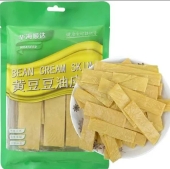
 3
3




Invasive plants are Earth's way of insisting we notice her medicines. Stephen Herrod Buhner
Everyone learns what works by learning what doesn't work. Stephen Herrod Buhner
 2
2




 7
7











 6
6




If there is one thing the Wizard of Oz has taught me, it is not to trust school teachers on bicycles.
 6
6




r ranson wrote:I don't know how to use cooking spray. What situations does one use it and maybe I can share the style we use.
Although one friend has a refillable oil spray gadget. Put the oil in and pump the lid up and down a few times to create pressure, then press the nozzle when you want to spray it. But I don't know why.
Invasive plants are Earth's way of insisting we notice her medicines. Stephen Herrod Buhner
Everyone learns what works by learning what doesn't work. Stephen Herrod Buhner
 10
10











 6
6




row row row your boat, gently down the stream
merrily merrily merrily, merrily, life is but a dream.
 7
7




I'm only 65! That's not to old to learn to be a permie, right?
 13
13




Sourdough Without Fail Natural Small Batch Cheesemaking A Year in an Off-Grid Kitchen Backyard Dairy Goats My website @NourishingPermaculture @KateDownham






 6
6




 2
2




Invasive plants are Earth's way of insisting we notice her medicines. Stephen Herrod Buhner
Everyone learns what works by learning what doesn't work. Stephen Herrod Buhner
 5
5




"Irrigation is not something that you just dump something on. It's not a big truck. It's a series of tubes."
 8
8




Anne Miller wrote:How do you get oil on the hot top plate of a waffle iron? Maybe the paper towel soaked in melted lard and carefully applied?

 7
7




- Tim's Homestead Journal - Purchase a copy of Building a Better World in Your Backyard - Purchase 6 Decks of Permaculture Cards -
- Purchase 12x Decks of Permaculture Cards - Purchase a copy of the SKIP Book - Purchase 12x copies of Building a Better World in your Backyard
 9
9




Timothy Norton wrote: a natural fiber paintbrush for such a task!

 8
8












 5
5




'What we do now echoes in eternity.' Marcus Aurelius
How Permies Works Dr. Redhawk's Epic Soil Series
 2
2




Anne Miller wrote:My question is how do you get those lard or tallow to replace cooking spray?
 5
5




Philip McGarvey wrote:
My soap box:
I bet that refined oils are not healthy. They aren't natural, require weird industrial/chemical processes, and only existed in the last ~100 years or so. Animal fat, butter, or unrefined coconut oil if you are vegan, seem to me to be the best cooking oils. These are mostly saturated fat, which you'll hear is bad for you. I've done extensive research on this and believe that this was largely a scam to get people to eat refined oils and grains instead of real natural fat which is mostly saturated fat. I haven't found any good evidence that saturated fat is unhealthy. And, I've been eating lots of it my entire life and seem to be in excellent health.
yet another victim of Obsessive Weeding Disorder
 8
8




Nothing ruins a neighborhood like paved roads and water lines.
 4
4




Invasive plants are Earth's way of insisting we notice her medicines. Stephen Herrod Buhner
Everyone learns what works by learning what doesn't work. Stephen Herrod Buhner
 4
4




 4
4




yet another victim of Obsessive Weeding Disorder

 4
4




 5
5




yet another victim of Obsessive Weeding Disorder
 6
6




Perfect The Dwelling Land and support the kickstarter! https://www.kickstarter.com/projects/paulwheaton/garden-cards?ref=90v0pa
 6
6




Christopher Weeks wrote:We bought a disposable can of spray oil four years ago when we got our first air fryer but we haven't used it up yet. Thirty years ago we had a refillable stainless steel and plastic can that you could pressurize by hand-pumping but it kept getting clogged with sticky olive oil so we got rid of it. Mostly we use brushes for the kind of thing you're talking about though we don't really use the waffle iron very often.
 4
4




yet another victim of Obsessive Weeding Disorder
 2
2




-Ayva Jean
 1
1




Anne Miller wrote:My question is how do you get those lard or tallow to replace cooking spray?
 2
2




Anne Miller wrote:How do you get oil on the hot top plate of a waffle iron? Maybe the paper towel soaked in melted lard and carefully applied?
 6
6




Rez Zircon wrote:I have a nonstick waffle iron, and I never grease it. I just put lots of butter in the batter. (Actually, that's how some old recipes said to do it, too.)
You'll want to use an old-fashioned waffle recipe that includes a lot of butter in the batter, which makes the waffles taste better (& obviously helps prevent sticking.
Before you get started, be sure that your waffle maker is well seasoned. A well seasoned waffle maker is key to creating a non-stick surface. Don't ever wash your waffle maker in water (& definitely not soap). I should just be wiped down with a dry towel (or paper towel) after use. If you have any sticking, scrape it off with a butter knife & re-season that spot.
When you put the waffle maker on the stove, turn the heat up very high. The pan should be very hot before you add batter, & this helps create a crisp exterior while also flash cooking the outside. High heat actually prevents cooking, believe it or not,
If your waffle maker is well seasoned, it should only need to be greased every 2-3 waffles to prevent sticking, but you'll want to grease it between each waffle anyway. That helps the waffles fry on the outside and it creates a crisp surface.
Butter has a lower smoke point than lard. (It's about 300ºF for butter, compared to around 375º for lard.) Properly rendered leaf lard is neutral & flavorless, perfect for making pies, donuts, & greasing waffle irons. Other people use coconut oil. With butter, the pan may start to smoke if you get your waffle maker too hot. Lard is more traditional, as the higher smoke point means you can cook your waffles at around 350ºF, which will leave them crisper.
I use a silicone pastry brush to crease the pan with melted butter or lard between each waffle. An Old fashioned natural bristle pastry brush works, too, if you get the food-safe ones. )
We give you three choices to prepare this recipe: use 4 tablespoons for a reduced-fat waffle, 8 tablespoons for a classic light & fluffy waffle; or 16 tablespoons for the crunchiest most delicious waffle imaginable.
Dry Ingredients:
1 3/4 cups flour, all-purpose or pastry 1 tsp baking powder 1 tbsp sugar 1/2 tsp salt
Wet Ingredients:
3 large eggs, well-beaten 6-16 tbsp unsalted butter (1/2 to 2 sticks) 1 1/2 cups milk
Before beginning, be sure your cast iron waffle maker is well seasoned.
Whisck toether dry ingredients.
in a sperate bowl, beat together wet nigredients, including melted butter, eggs, & milk.
Add the wet ingreidnts to the dry and stir unto; just combined. Do not overwork the batter.
Grease the waffle iron with butter or lard.
Preheat your waffle iron until very hot, just short of the smoke point (just under 300ºF if greasing with butter, or just under 375ºF if using lard.)
Pour waffle batter into the center of the waffle iron, spreading it until it's within about 1/2 to 1/4 inch of the edge. Close the waffle iron & immediately flip.
Cook for about 2-3 minutes on the second side, then flip back to the first side for another 2-3 minutes.
Remove waffle with a fork when fully cooked & golden brown on both sides.
Grease the waffle iron before adding more batter, and repeat.
 8
8











 4
4





 7
7




Cristobal Cristo wrote:
Anne Miller wrote:My question is how do you get those lard or tallow to replace cooking spray?
In situation like this I hold a piece of lard (or better ruminant suet) and smear the hot surface with it - "painting" with fat. Sometimes I fry pancakes this way.
Perfect The Dwelling Land and support the kickstarter! https://www.kickstarter.com/projects/paulwheaton/garden-cards?ref=90v0pa

 5
5




Tyler Grace wrote:I use ghee for high temperature oven cooking, the smoke point is around 485 degrees. I also use it for stovetop cooking but usually use lard, butter or coconut oil.
Failure is a sign of activity and learning. It had nothing to do with under achievement
I never want to have a team member who has never failed - They are not doing!! 👍

|
I'm tired of walking, and will rest for a minute and grow some wheels. This is the promise of this tiny ad:
The new permaculture playing cards kickstarter is now live!
https://www.kickstarter.com/projects/paulwheaton/garden-cards
|






